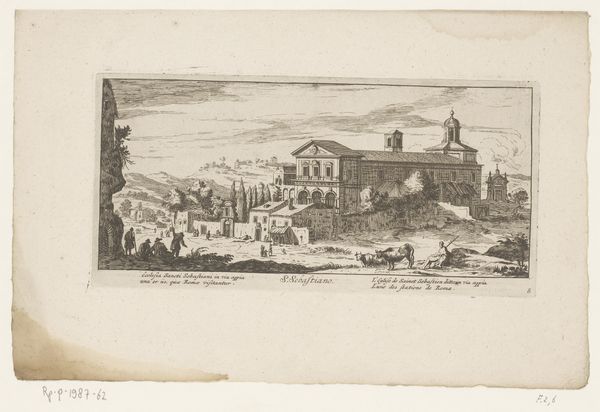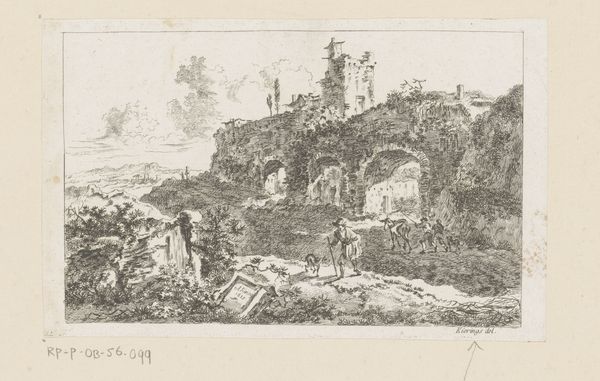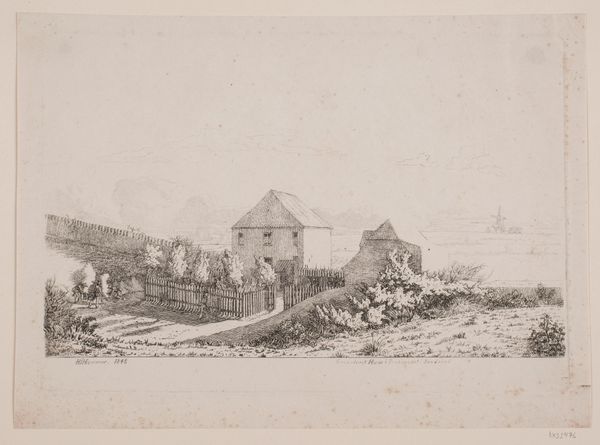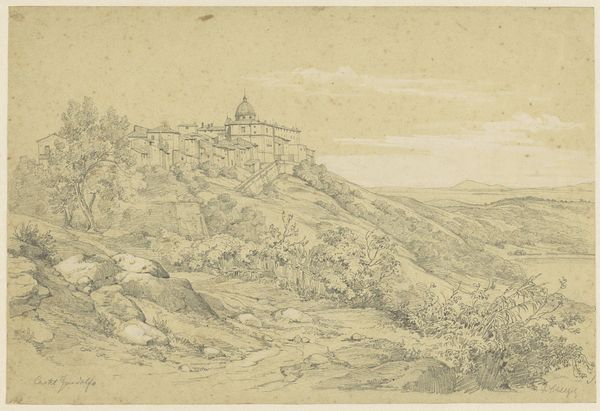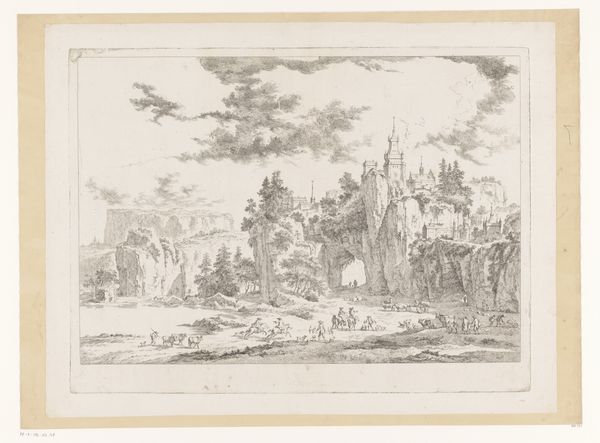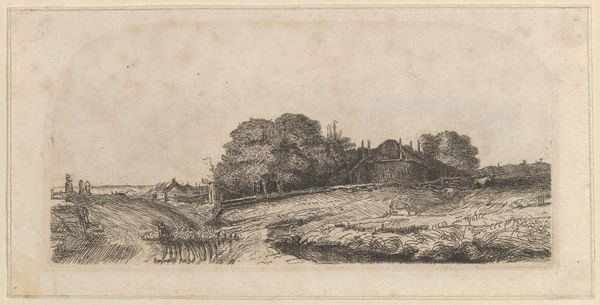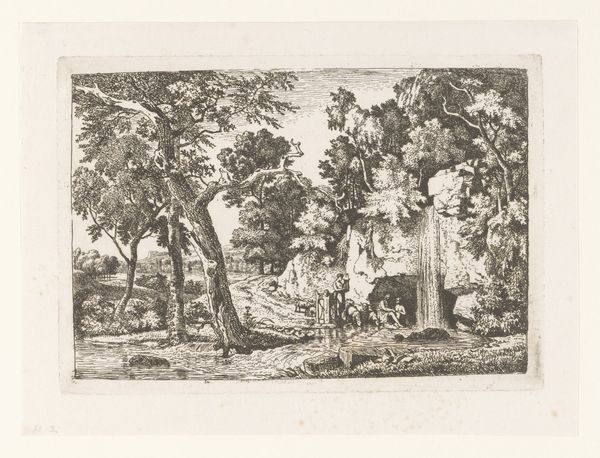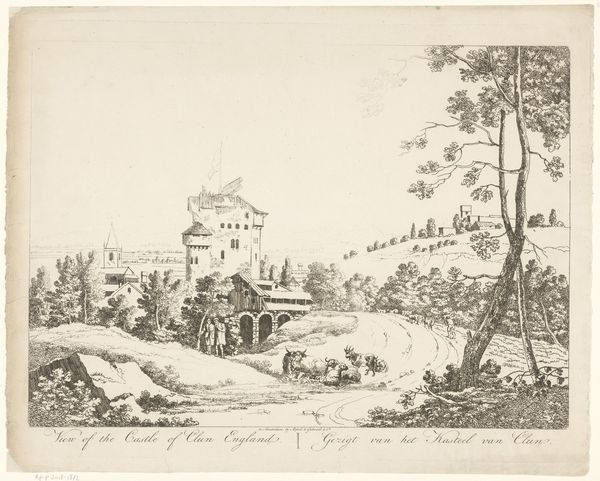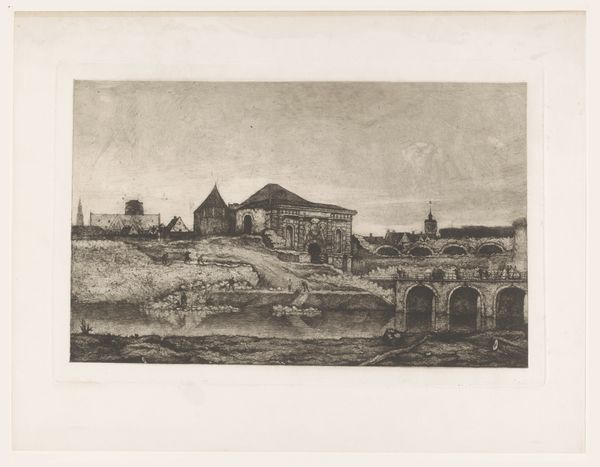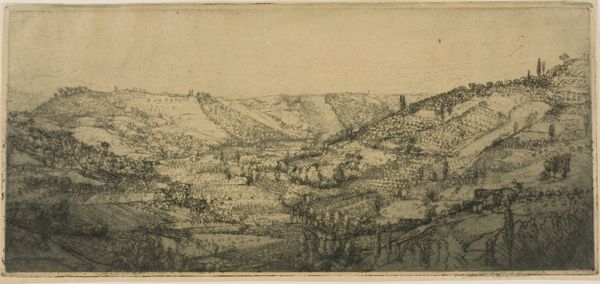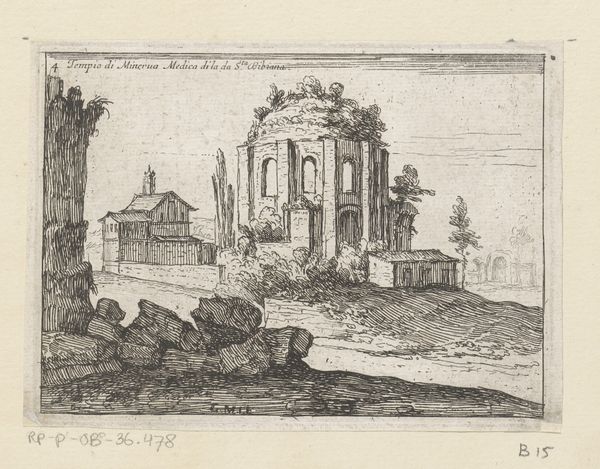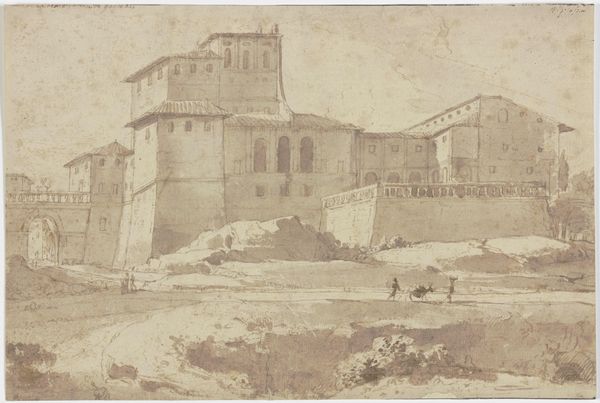
print, etching, paper
# print
#
etching
#
landscape
#
paper
#
cityscape
#
realism
Dimensions: 119 × 220 mm (image/plate); 155 × 286 mm (sheet)
Copyright: Public Domain
Curator: Donald Shaw MacLaughlan’s etching, “The Certosa, Florence,” created in 1905, presents a compelling cityscape. It’s currently part of the Art Institute of Chicago's collection. Editor: It feels incredibly serene. The crisp lines create a sense of stillness, almost as if time is suspended in this moment overlooking Florence. The shading feels soft and embracing. Curator: That's interesting you mention stillness. Considering the historical and sociopolitical context of the early 20th century, that kind of contemplative stillness offered a refuge from a rapidly changing world. The etching is created during a time of intense urbanization. Looking back, one can understand a longing to go back to the rural simplicity this image suggests. Editor: Yes, there's also something to be said about the visual symbols. Notice how the vertical cypress trees lead the eye directly up to the monastery, which carries centuries of religious, intellectual, and, I suppose, temporal power, standing in stark contrast with nature. The light illuminating the building definitely suggests a type of ethereal illumination, something beyond our mundane existence. Curator: You’re right. MacLaughlan subtly places the Certosa as a beacon. Perhaps the choice of architecture becomes representative of the ruling class during the era, and how the church and the city's elite formed strong power alliances. The detailed attention to those trees might speak to a deep understanding of how culture gets intertwined with the earth it sits on. The land supports power, visually and symbolically. Editor: The composition makes one want to slow down, contemplate our existence, and the images play a vital role. Even something like the inclusion of a lone figure—are my eyes deceiving me?—near the bottom of the scene gives it scale but also represents mankind. This scene reflects an image of order, history, and quiet resilience. Curator: Yes, viewing MacLaughlan’s work through the lens of early 20th-century shifts can reveal so many new contexts to consider about the work, beyond the formal aspects. Editor: Indeed. Reflecting on these visual echoes from the past allows us to think about the timeless quest for meaning across time and societies.
Comments
No comments
Be the first to comment and join the conversation on the ultimate creative platform.
